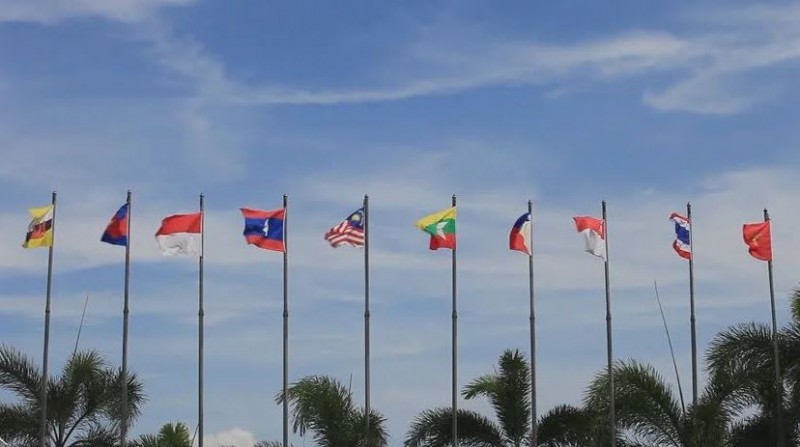
The Association of Southeast Asian Nations, commonly known as ASEAN, is a regional intergovernmental organization that has played a pivotal role in fostering cooperation and integration among its member states. Established on August 8, 1967, ASEAN has grown to become a prominent force in Southeast Asia, comprising ten diverse countries with a shared vision of enhancing regional peace, stability, and prosperity.
Historical Background
ASEAN was founded with the signing of the Bangkok Declaration by five initial member countries: Indonesia, Malaysia, the Philippines, Singapore, and Thailand. Its primary objective was to promote political and economic cooperation and ensure regional stability amidst the backdrop of the Cold War and other geopolitical challenges.
Objectives of ASEAN
Promotion of Peace and Stability
One of the fundamental goals of ASEAN is to maintain peace and stability in the region. Through diplomatic means and dialogue, member countries strive to resolve disputes and prevent conflicts that could destabilize Southeast Asia.
Economic Cooperation and Integration
ASEAN envisions an economically integrated and interconnected region. The organization has made significant progress in creating a single market and production base through various initiatives and agreements.
Cultural Exchange and Collaboration
Understanding the importance of cultural diversity, ASEAN promotes mutual understanding and cooperation in various fields, such as education, arts, and heritage, to strengthen the sense of regional identity and unity.
Key Achievements of ASEAN
ASEAN Free Trade Area (AFTA)
Launched in 1992, AFTA aimed to eliminate tariffs and trade barriers among ASEAN member states, creating a more seamless and competitive regional market. The reduction of trade barriers has stimulated economic growth and increased intra-regional trade.
ASEAN Economic Community (AEC)
In 2015, ASEAN established the AEC, a blueprint for economic integration in the region. The AEC envisions a highly competitive and inclusive economic community, promoting free movement of goods, services, investment, and skilled labor.
Political and Security Community
ASEAN has made substantial strides in building a political and security community. Member states engage in regular dialogues and consultations to address regional challenges, including transnational crimes and terrorism.
Challenges Faced by ASEAN
Territorial Disputes
Some member countries have overlapping territorial claims, leading to occasional tensions and disagreements within the organization. Managing these disputes while maintaining unity remains a challenge.
Economic Disparities
While ASEAN has experienced overall economic growth, there are significant disparities in development levels among member states. Addressing these disparities and ensuring inclusivity remains a key concern.
Human Rights Issues
ASEAN faces scrutiny over human rights issues in some member states. Balancing the promotion of human rights with non-interference in internal affairs poses a complex challenge.
Cooperation and Integration Efforts
ASEAN Regional Forum (ARF)
The ARF serves as a platform for dialogue and consultation on political and security issues, involving ASEAN member states and external partners. It fosters cooperation in areas of mutual interest and concern.
ASEAN Plus Three (APT)
APT brings together ASEAN and three East Asian countries: China, Japan, and South Korea. This forum enhances economic collaboration and addresses financial and regional challenges.
ASEAN Community-building Blueprints
ASEAN has developed blueprints for each community (AEC, Political-Security Community, and Socio-Cultural Community), providing a roadmap for achieving their respective goals.
ASEAN's Role in Global Affairs
Engaging with Dialogue Partners
ASEAN actively engages with major powers and international organizations through dialogues and partnerships, contributing to regional and global stability and prosperity.
Impact on Regional Geopolitics
The growing influence of ASEAN in regional geopolitics has led to increased attention from major powers seeking to strengthen ties and partnerships in Southeast Asia.
Future Prospects and Opportunities
Expanding Trade Partnerships
ASEAN continues to explore new trade opportunities and partnerships beyond the region to enhance economic growth and reduce dependence on traditional markets.
Strengthening Social and Cultural Ties
Through cultural exchanges and people-to-people initiatives, ASEAN seeks to strengthen social bonds and foster greater understanding and appreciation among member states.
Addressing Environmental Concerns
ASEAN faces shared environmental challenges, including climate change and pollution. Collaborative efforts are essential to protect the region's natural resources and biodiversity.
ASEAN has come a long way since its inception, evolving into a significant regional organization with far-reaching impacts. By promoting cooperation, integration, and dialogue among its member states, ASEAN continues to play a crucial role in maintaining peace, stability, and sustainable development in Southeast Asia.
European Union (EU): Fostering Economic Integration and Cooperation among European Nations
World Intellectual Property Organization (WIPO): Protecting Intellectual Property Rights Globally
World Trade Organization (WTO): Facilitating International Trade and Resolving Trade Disputes